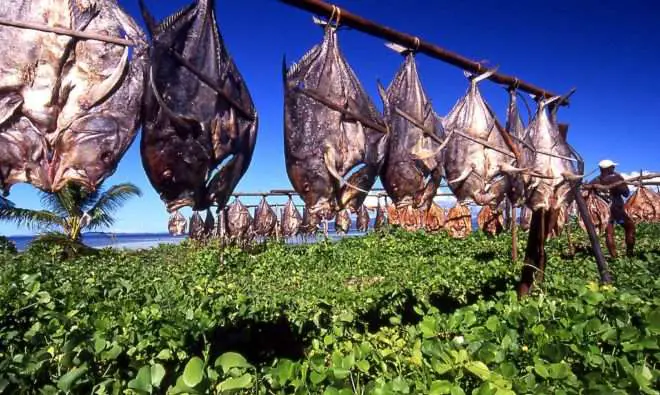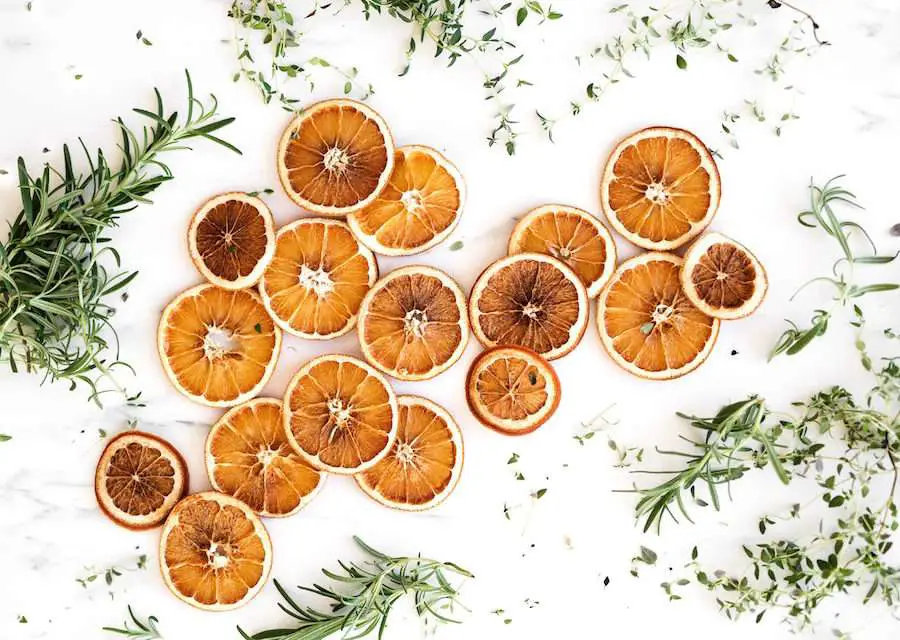This post contains affiliate links
Table of Contents
An Overview of Home Food Dehydration
When you hear the word “drying food at home” you think of raisins, prunes, banana chips, and spicy meat flakes. These are examples of healthy snacks that you can do at home just by drying.
According to historians, man discovered the drying food process rather than invented it. It is man’s nature to adapt to his environment in order to survive. Historians theorized that man might have realized that fallen fruits dried under the sun could still be edible.
Since then drying methods have evolved. The earliest record of food drying is dated around 12,000 B.C. when Egyptians used to dry fish and poultry. The ancient Middle East and Eastern Asian civilizations have been trading sun-dried foods.
In the Middle Ages, countries like Italy didn’t have enough sun. So the Romans constructed stillhouses. The fire inside these stillhouses simulated the sun’s heat to dry foods like vegetables, fruits, herbs, and meats.
Then came the mechanized food dehydrators invented in the mid-1800s. Since then, food dehydration became a method used by many.
How to Dry Food at Home
Anyway, that’s enough history for today. What you really came to learn here is how to dry food at home. There are many methods to dry your food at home. Some methods may take longer than others, some methods may be cheaper than others, and some methods may produce better results than others. A few of these drying methods include – sun drying, convection drying, air drying, bed drying, freeze-drying, microwave-vacuum drying, shelf drying, spray drying, infrared radiation drying, combined thermal hybrid drying, and even a simple household oven!
In this article, we will guide you to the basics of drying food at home, some of these different methods, and a few tips that will help you get started.
Sun Drying
This is the easiest and most affordable way of home food dehydration because nature does the drying for you. But, the National Center for Home Food Preservation says that not all foods are best for sun drying.
Fruits that are high in sugar and acid are best to dry outdoors, especially when weather conditions are favorable for drying. In California, they still sundry grapes and tomatoes at an industrial level.
Vegetables (except beans) and meats are better dried indoors using food dehydrators. Vegetables contain less sugar and acids thus sun-drying increases the risk of spoilage. The same is true with meats that contain high levels of fats and proteins.
Fish and seafood are more likely to be sun-dried because its salt content contributes to the drying process. No wonder, you see much more of dried fish and seafood rather than dried meat in Asian markets or groceries.

Preparing for Sun Drying
Just like in ancient times, it takes several days to dry foods under the sun. The best conditions for sun drying should be hot at 85℉ (almost 30°C) or higher, dry, humid, and a bit breezy.
Because the weather is unpredictable, drying food under the sun is also risky. You wouldn’t want your drying food to be rained upon. It must be covered or brought under the shelter at night to prevent condensation and moisture that slows down the drying process.
For these reasons, it would be better to keep your racks or screen light and portable so that you could move them where the sun is and if in case it rains.
Equipment for Sun Drying
The basic things you need for sun drying are a few racks, trays, or screens which you could place on top of blocks to allow air movement around the food. It is better to place the racks or screens on concrete paths or over a sheet of aluminum or tin. The heat from the sun to the concrete or metal bounces back to the food thus increases its temperature which helps the drying process.
Make sure that you use screens that are safe for food contact. Use stainless steel, Teflon-coated, fiberglass, or plastic screens. Avoid screens made from galvanized metal cloth (“hardware cloth”) coated with metals like cadmium or zinc. These metals can oxidize food and may leave harmful residues. Also, avoid trays that are made of aluminum and copper. Copper destroys vitamin C in foods and increases oxidation. Aluminum, on the other hand, corrodes and may discolor some food.
Inevitably, drying foods attract birds and insects. Therefore, you need two screens for sun drying. One screen acts as the rack at the bottom, while the other one on top acts as the cover.
Air Drying
Another method of home food dehydration is by hanging the food to let it dry. This method easily attracts insects and birds but nowadays you may buy hanging food dryers online.
Food Dehydrators
We have to thank French inventors Masson and Chollet for creating a mechanized dehydrator in the mid-1800s. Their invention paved the way for the modern dehydrators we have today.
They developed a process where vegetables were dried up at 105°F (40.5°C) then compressed the food into vegetable cakes. At that time, vegetable cakes sound unappetizing or unappealing. But the sailors welcomed the idea as their source of nutrition.
A food dehydrator is defined as a small electrical appliance for drying foods indoors. It consists of an electric element for heat, a fan for air, and vents for air circulation. They are designed to dry food fast at 140°F.
They are available from department stores and online shops. Costs vary depending on the features like size, number of trays, where the fans are located, etc. You will get to know more models of food dehydrators here on this website as we review them.

Click the image to check price on Amazon
Types of Food Dehydrators
Food dehydrators are categorized into two based on their airflow: horizontal and vertical.
Dehydrators with horizontal airflow have the heating element and fan at the side or sides of the unit. This gives the advantage of allowing several different foods to be dried at the same time because the layered trays receive an equal amount of heat.
Dehydrators with vertical airflow have the heating element and fan located at the base of the unit. This may affect the drying foods because juices may drip from the top tray to the bottom and may affect the taste or odor of the food.
What to Look For in a Food Dehydrator
When buying a home food dehydrator, check for the following features:
- Check if the unit has double-wall construction made of metal or high-grade plastic. Check if the heating element is enclosed well.
- Choose a countertop design that would fit in your kitchen.
- Look for an enclosed thermostat from 85°F to 160°F and a dial to help you regulate it. Check also a timer that goes with the thermostat. You would like to have a timer that shuts the dehydrator off when the drying is done.
- Check the fan or blower if air flows evenly within the chamber.
- Check the mesh trays if they’re sturdy, easy to clean and certified to meet universal standards.
- Check if the unit has a warranty or after-sales customer support in case you need help with technical problems and replacement.
Solar Food Dehydrators
These types of dehydrators are different from the usual sun-drying because they work faster than air dryers. Solar energy is converted to heat as it enters an enclosed chamber. Airflow follows the natural convection, warm air rises, and goes out to the top vents.
Some solar food dryers have separate solar energy collectors to generate heated air (indirect solar food dryer). Others combine the solar collector and food chamber (direct solar food dryer). Some say that the indirect solar food dryers work well but it is bulky and may require backup electricity as an alternative heat source whenever the weather changes.

Click the image to check price on Amazon
Other Drying Methods
There are other different methods of drying. These include the following:
- Convection drying
- Bed dryers
- Drum drying
- Freeze Drying
- Microwave-vacuum drying
- Shelf dryers
- Spray drying
- Infrared radiation drying
- Combined thermal hybrid drying
- Sunlight
- Commercial food dehydrators
- Household oven
Stay tuned for some future articles that will touch on these topics.
A Few Tips
Before you start throwing anything inside your dehydrator, here are a few tips you should be aware of when starting to do home food dehydration:
- Learn about your dehydrator and take care of it. Consider your food dehydrator as an investment because it will go a long way if you really take care of it. Read the instruction manual before using and follow the instructions on how to take clean and take care of it.
- If you don’t have a dehydrator, you can use an oven or air dry. Herbs are easy to dry. All you have to do is hang them but not on direct sunlight. However, be aware that there are differences in drying using an oven, microwave, etc. We will discuss it soon.
- Some vegetables should be blanched before drying. Blanching keeps the colors brighter, retains the vitamins, and makes the dried food taste fresh when rehydrated. To blanch, lower the vegetable into boiling water for a few minutes, then put it immediately on ice-cold water to stop it from cooking.
- Dry one family of food at a time. Although it can be done, (for example tomatoes and peppers) mixing them inside a dehydrator may leave a strong taste or smell of pepper on to the tomato.
- Slice the fruits and vegetables in uniform thickness. Slicing them in the same thickness makes it drying uniform and even. Don’t overlap them on the tray, too.
- Keep your dehydrator in a well-ventilated area (or better yet, outdoors) when drying onions and hot peppers. Oils from the peppers can irritate the eyes if you dry them indoors. The smell of drying onions may stick inside the kitchen, too. More so, the oils and smell remain on the trays, so clean the trays carefully after use.
- Dehydration temperature and time vary with different foods. Always check your thermostat before starting to dry meat or fish. Some foods dry at high temperatures faster than the others. So check your thermostat from time to time when drying.
- You don’t waste much on food drying. One advantage of drying foods is that you could make use of items you normally get rid of. For example, if you have an overabundance of lettuce or carrots, dry them, powder them in the food processor, and use them in soups and stews for flavor.
- It is important to store and label any preserved food properly. Use either a zippered plastic bag, an air-tight plastic container, or a dry glass jar for storage. Store dried food separately. Putting them in one container may affect the taste once you use it. Also, label them properly and it may be a good idea to put on the date when you dried and stored them.
RELATED ARTICLE: 9 Ancient Food Preservation Methods We Do Today
Final Thoughts
Food dehydration, when done at home, is simple, healthy, and can save you money. Dried foods still keep their vitamins and minerals and can be stored for a long time. The guidelines mentioned above may assure you success if you follow them correctly.
For more information about food dehydrators and recipes, check out our other posts!

